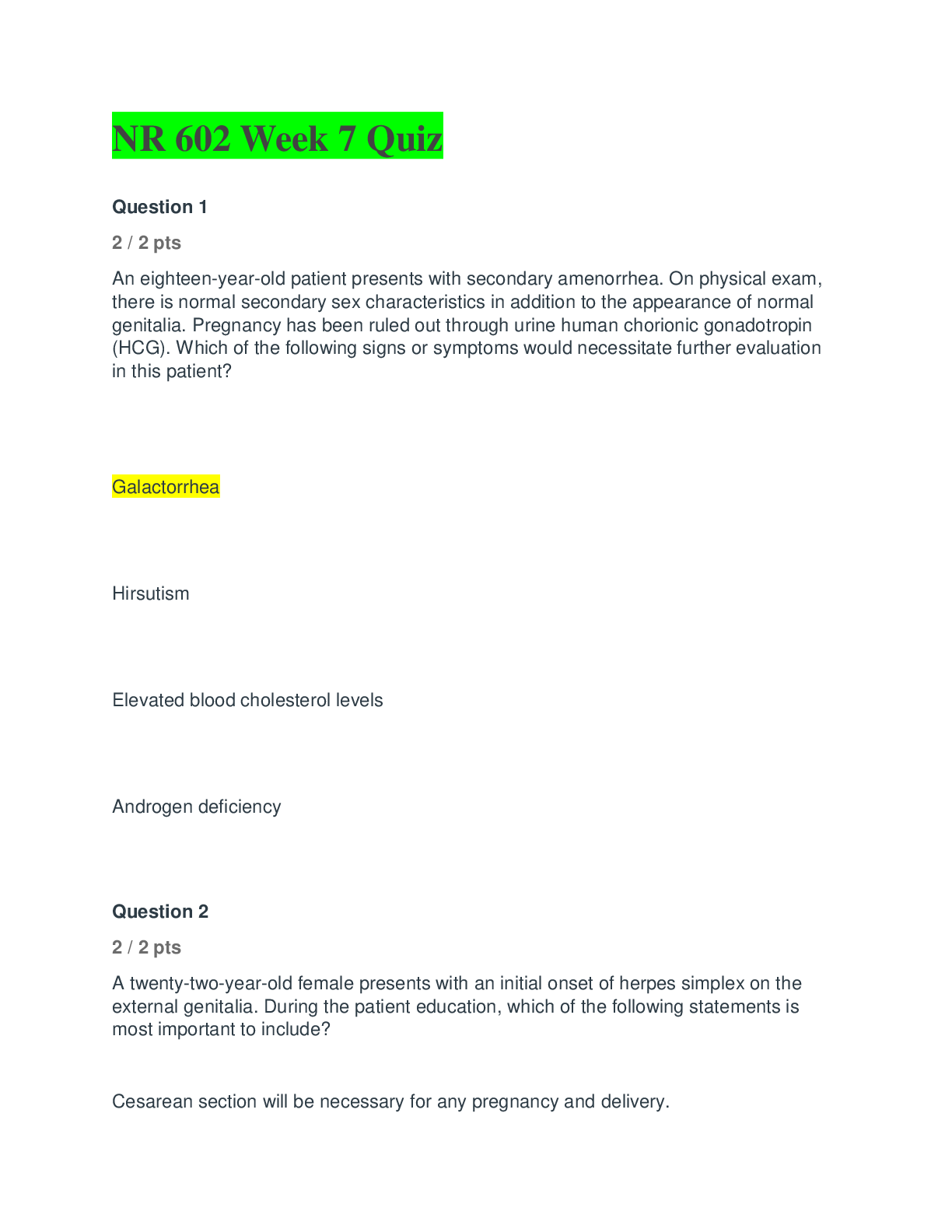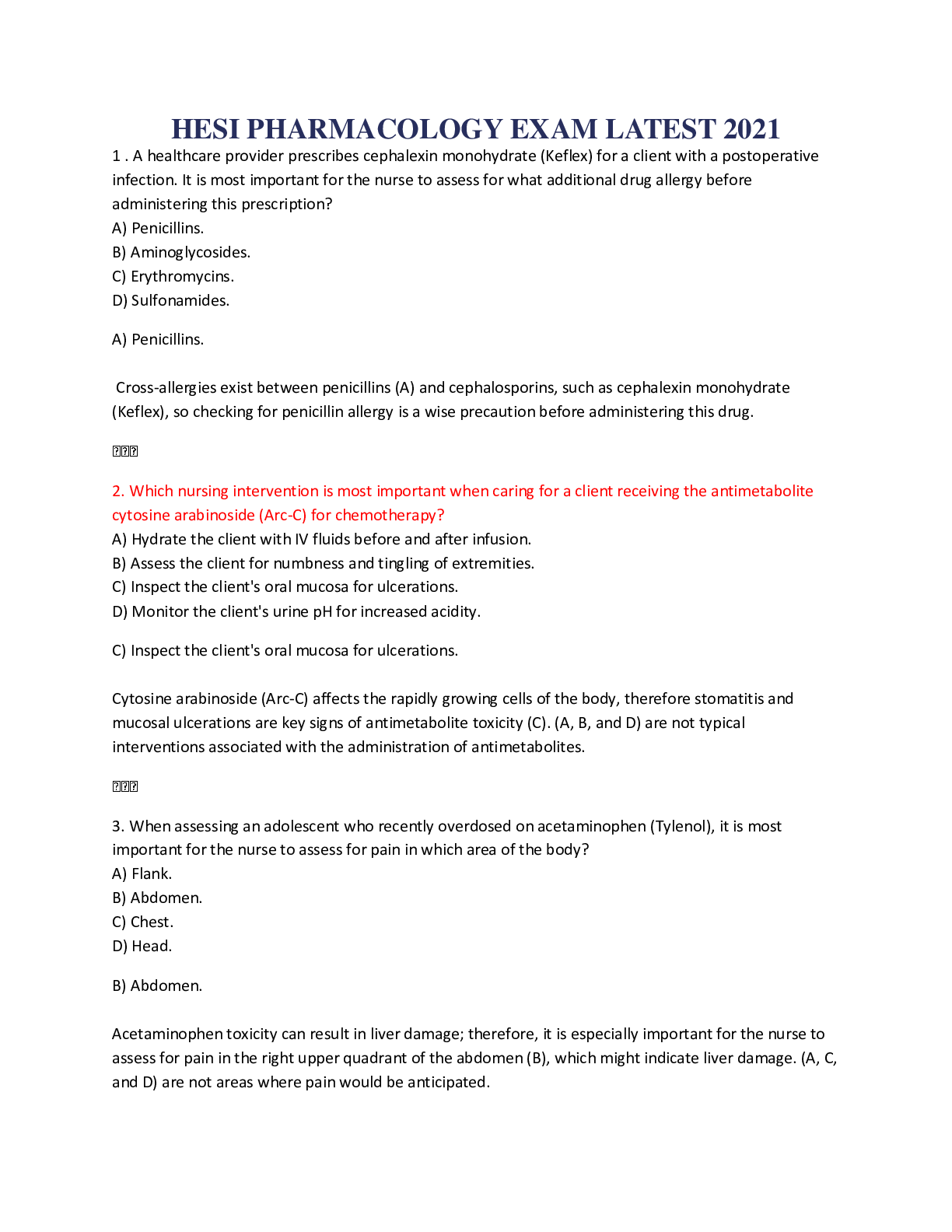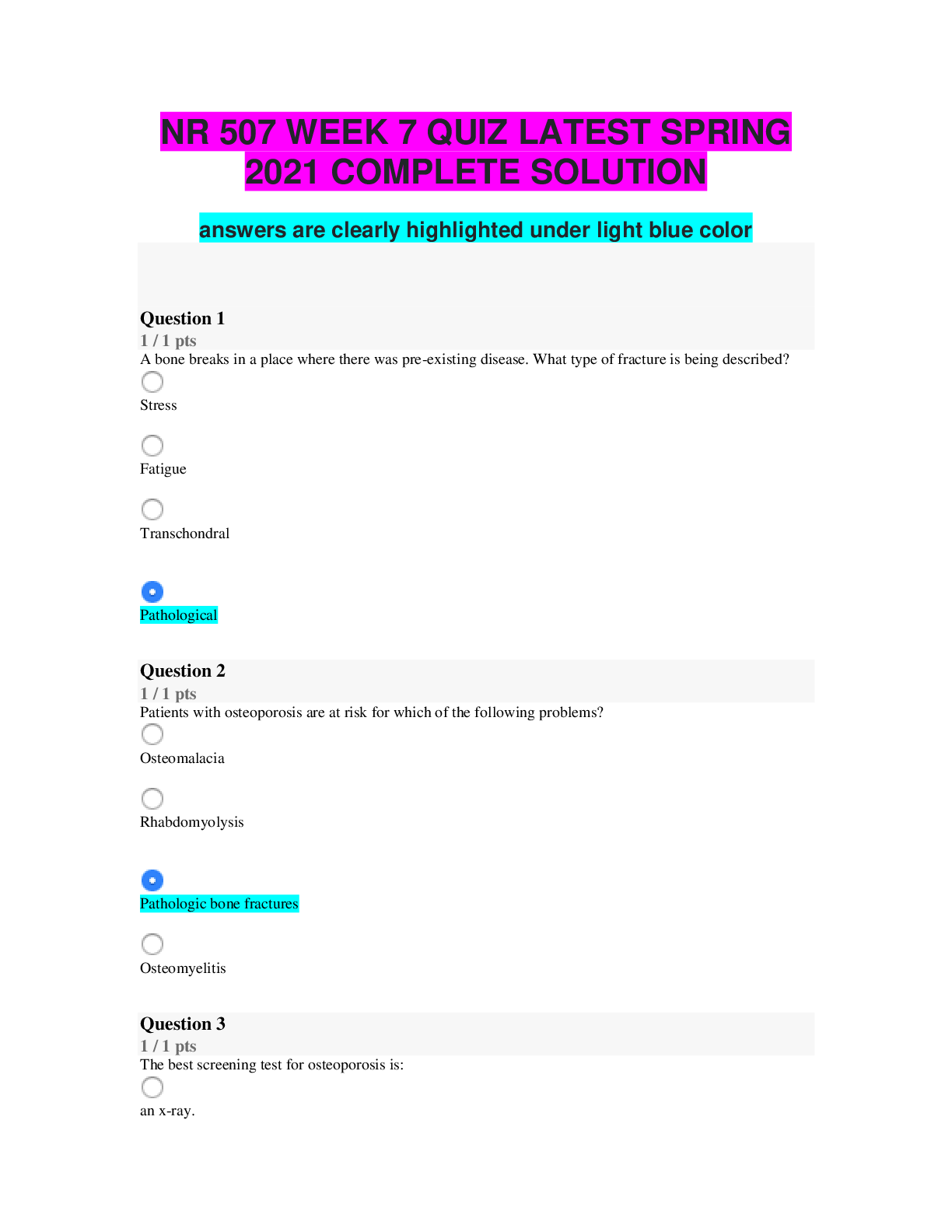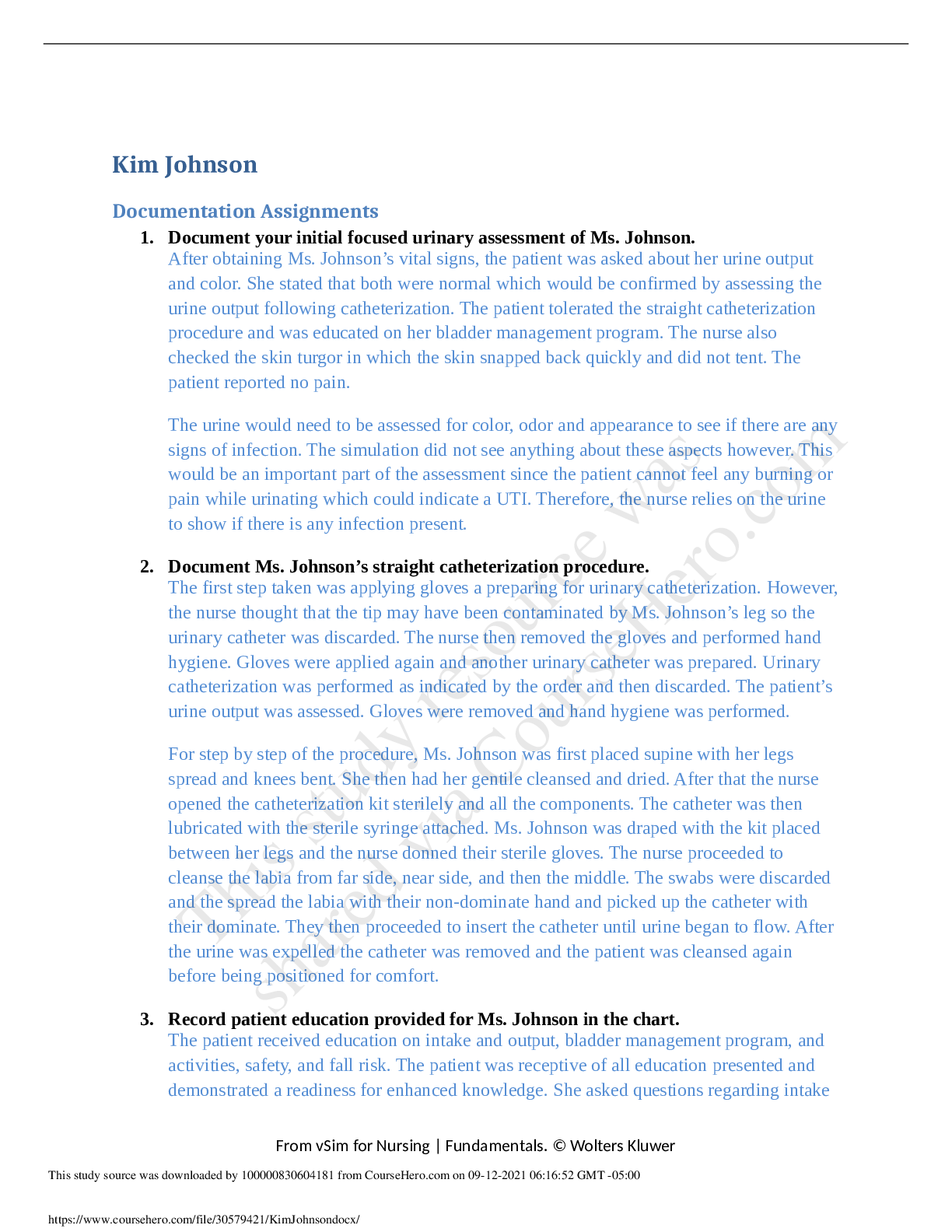hesi med surg exam[correct and verified answers graded A+
Document Content and Description Below
An ER nurse is completing an assessment on a patient that is alert but struggles to answer questions. When she attempts to talk, she slurs her speech and appears very frightened. What additional cli... nical manifestation does the nurse expect to find if nacy's sysmptoms have been caused by a brain attack (stroke)? A. A carotid bruit B. A hypotensive blood pressure C. hyperreflexic deep tendon relexes. D. Decreased bowel sounds A) A carotid bruit. Rationale: the carotid artery (artery to the brain) is narrowed in clients with a brain attack. A bruit is an abnormal sound heard on auscultation resulting from interference with normal blood flow. Usually the blood pressure is hypertensive. Initially flaccid paralysis occurs, resulting in hyporefkexic deep tendon reflexes. Bowel sounds are not indicative of a brain attack. Which clinical manifestation further supports an assessment of a left-sided brain attack? A) Visual field deficit on the left side. B) Spatial-perceptual deficits. C) Paresthesia of the left side. D) Global aphasia. D) Global aphasia. Rationale: Global aphasia refers to difficulty speaking, listening, and understanding, as well as difficulty reading and writing. Symptoms vary from person to person. Aphasia may occur secondary to any brain injury involving the left hemisphere. Visual field deficits, spatial-perceptual deficits, and paresthsia of the left side usually occur with right-sided brain attack. When preparing a patient for a noncontrast computed tomography (CT) scan STAT, what nursing intervention should the nurse implement? A) Determine if the client has any allergies to iodine B) Explain that the client will not be able to move her head throughout the CT scan. C) Premedicate the client to decrease pain prior to having the procedure. D) Provide an explanation of relaxation exercises prior to the procedure. B) Explain that the client will not be able to move her head throughout the CT scan. Rationale: Because head motion will distort the images, Nancy will have to remain still throughout the procedure. Allergies to iodine is important if contrast dye is being used for the CT scan. Premedicating the client to decrease pain prior to the procedure is unnecessary because CT scanning is a noninvasive and painless procedure. Providing an explanation of relaxation exercises prior to the procedure is a worthwhile intervention to decrease anxiety but is not of highest priority. A neurologist prescribes a magnetic resonance imaging (MRI) of the head STAT for a patient. Which data warrants immediate intervention by the nurse concerning this diagnostic test? A) Elevated blood pressure. B) Allergy to shell fish. C) Right hip replacement. D) History of atrial fibrillation. C) Right hip replacement. The magnetic field generated by the MRI is so strong that metal-containing items are strongly attracted to the magnet. Because the hip joint is made of metal, a lead shield must be used during the procedure. Elevated blood pressure, an allergy to shell fish, and a history of atrial fibrillation would not affect the MRI. A client's daughter is sitting by her mother's bedside who was recently transferred to the Intermediate Care Unit. She states "I don't understand what a brain attack is. The healthcare provider told me my mother is in serious condition and they are going to run several tests. I just don't know what is going on. What happened to my mother?" What is the best response by the nurse? A) "I am sorry, but according to the Health Insurance Portability and Accounting Act (HIPAA), I cannot give you any information." B) "Your mother has had a stroke, and the blood supply to the brain has been blocked." C) "How do you feel about what the healthcare provider said?" D) "I will call the healthcare provider so he/she can talk to you about your mother's serious condition." B) "Your mother has had a stroke, and the blood supply to the brain has been blocked." Rationale: The nurse can discuss what a diagnosis means. Nancy is unable to make decisions, so the next of kin, her daughter, Gail, needs sufficient information to make informed decisions. The nurse has the knowledge, and the responsibility, to explain Nancy's condition to Gail. The nurse should give facts first, and then address her feelings after the information is provided. What is the normal range for cardiac output? The normal range for cardiac output to ensure cerebral blood flow and oxygen delivery is 4 to 8 L/min. A client was admitted with the diagnosis of a brain attack. Their symptoms began 24 hours before being admitted. Why would this client not be a candidate for for thrombolytic therapy? Thrombolytic therapy is contraindicated in clients with symptom onset longer than 3 hours prior to admission. This client had symptoms for 24 hours before being brought to the medical center What are plate guards? Plate guards prevent food from being pushed off the plate. Using plate guards and other assistive devices will encourage independence in a client with a self-care deficit. Which condition is considered a non-modifiable risk factor for a brain attack? A) High cholesterol levels. B) Obesity. C) History of atrial fibrillation. D) Advanced age. D) Advanced age. Rationale: People over age 55 are a high-risk group for a brain attack because the incidence of stroke more than doubles in each successive decade of life. Nonmodifiable means the client cannot do anything to change the risk factor. All the other options are modifiable risk factors. A client is experiencing homonymous hemianopsia as the result of a brain attack. Which nursing intervention would the nurse implement to address this condition? A) Turn Nancy every two hours and perform active range of motion exercises. B) Place the objects Nancy needs for activities of daily living on the left side of the table. C) Speak slowly and clearly to assist Nancy in forming sounds to words. D) Request that the dietary department thicken all liquids on Nancy's meal and snack trays. B) Place the objects Nancy needs for activities of daily living on the left side of the table. Rationale: Homonymous hemianopsia is loss of the visual field on the same side as the paralyzed side. This results in the client neglecting that side of the body, so it is beneficial to place objects on that side. Nancy had a left-hemisphere brain attack so her right side is the weak side. Speaking slowly and clearly would address the client's verbal deficits due to aphasia. Requesting all liquids to be thickened would address dysphagia. Turning the client every 2 hours and performing active range of motion exercises would address the client's risk for immobility due to paralysis. A physical therapist (PT) places a gait belt on a client and is assisting them with ambulation from the bed to the chair. As they get up out of the bed, they report being dizzy and begin to fall. The PT carefully allows them to fall back to the bed and notifies the primary nurse. Which written documentation should the nurse put in the client's record? A) Client experienced orthostatic hypotension when getting out of bed. B) PT reported client complained of dizziness when getting out of bed, and gait belt was used to allow client to fall back onto the bed. C) PT notified the primary nurse that the client could not ambulate at this time because of dizziness. D) Client had difficulty ambulating from the bed to the chair when accompanied by the PT, variance report completed. B) PT reported client complained of dizziness when getting out of bed, and gait belt was used to allow client to fall back onto the bed. Rationale: This documentation provides the factual data of the events that occurred. A)The nurse is making an assumption that the dizziness was caused by orthostatic hypotension. C) Not all the pertinent facts are included in this documentation. D) A variance report should never be documented in the client's record. [Show More]
Last updated: 1 year ago
Preview 1 out of 31 pages

Buy this document to get the full access instantly
Instant Download Access after purchase
Add to cartInstant download
We Accept:

Reviews( 0 )
$9.50
Document information
Connected school, study & course
About the document
Uploaded On
Apr 20, 2021
Number of pages
31
Written in
Additional information
This document has been written for:
Uploaded
Apr 20, 2021
Downloads
0
Views
34


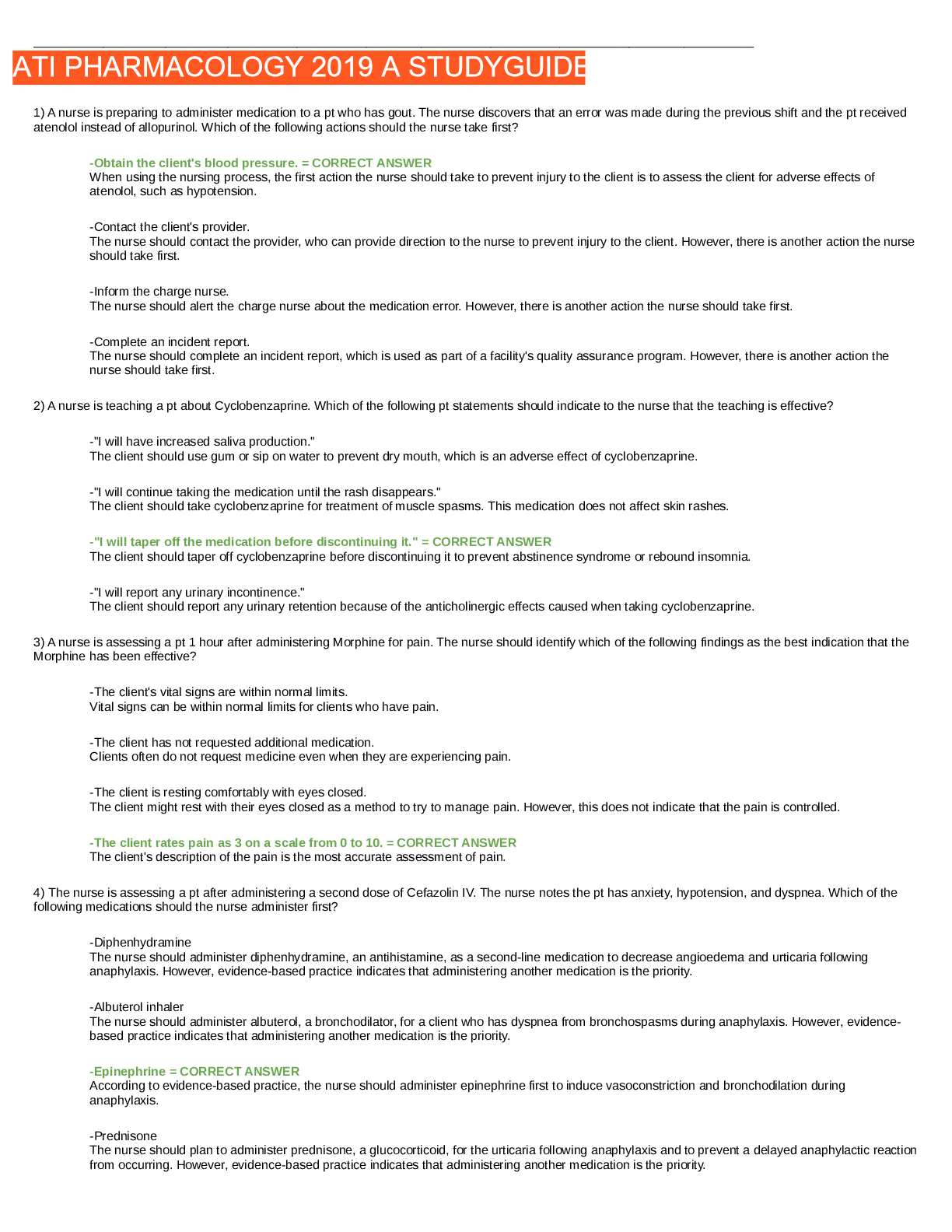
 (2).png)
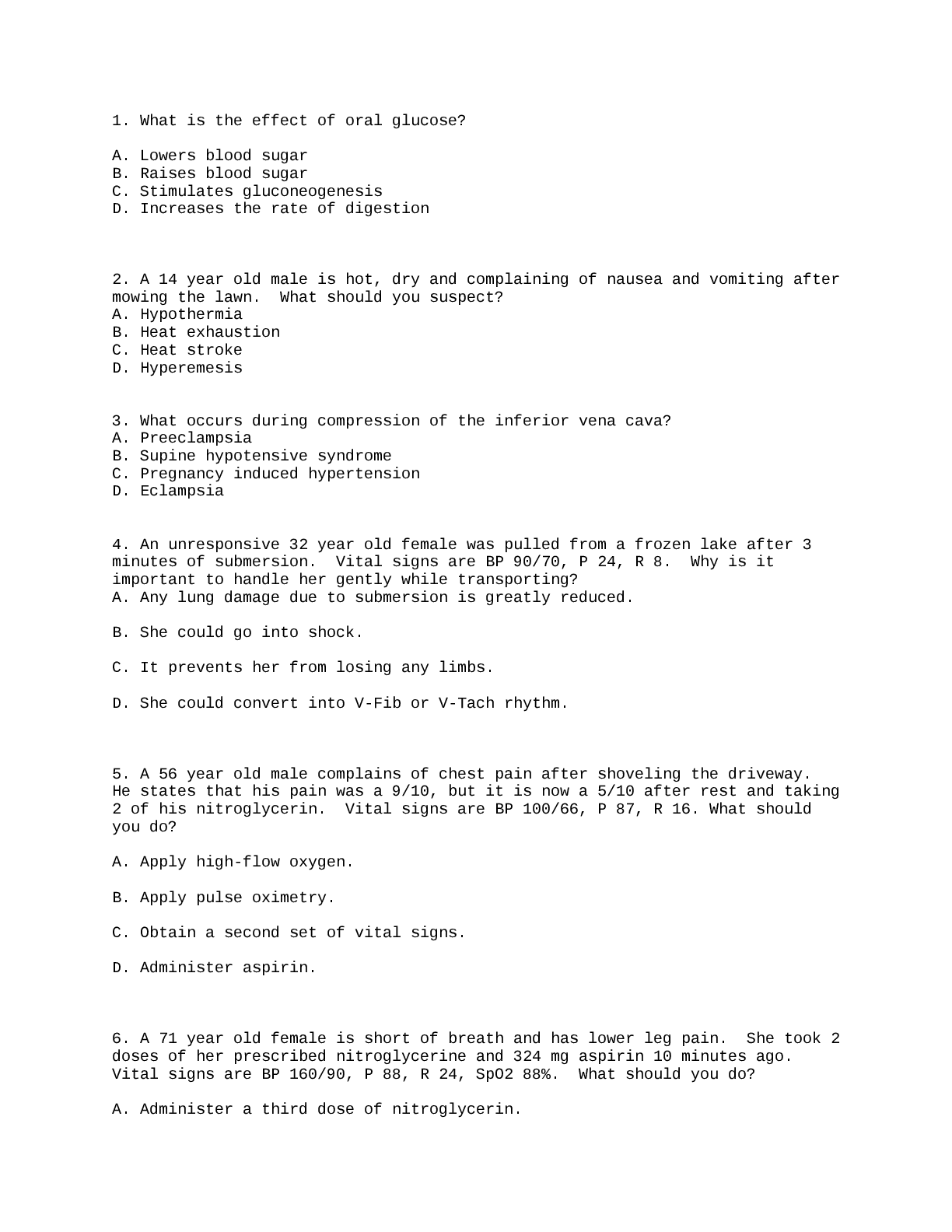
.png)
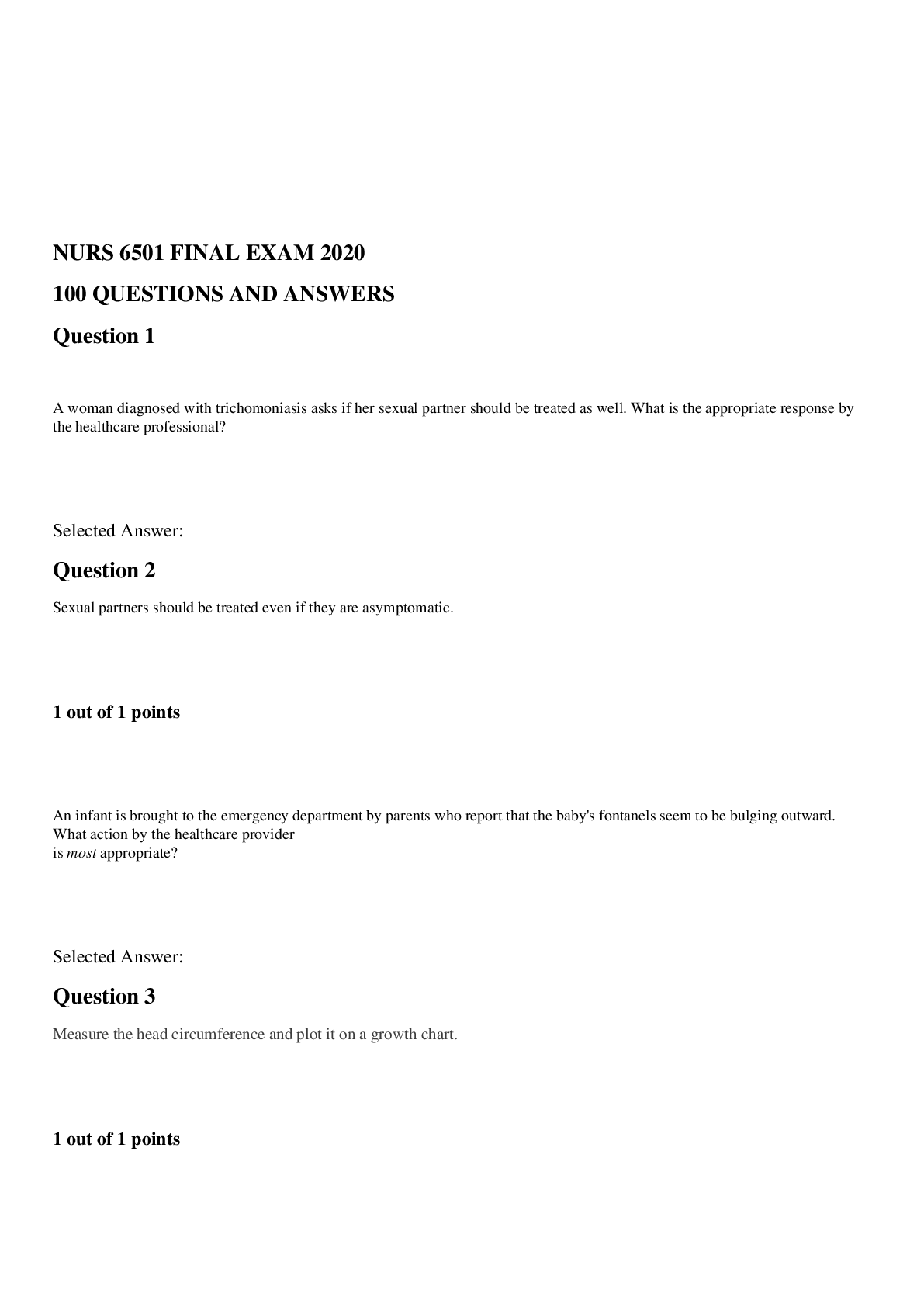
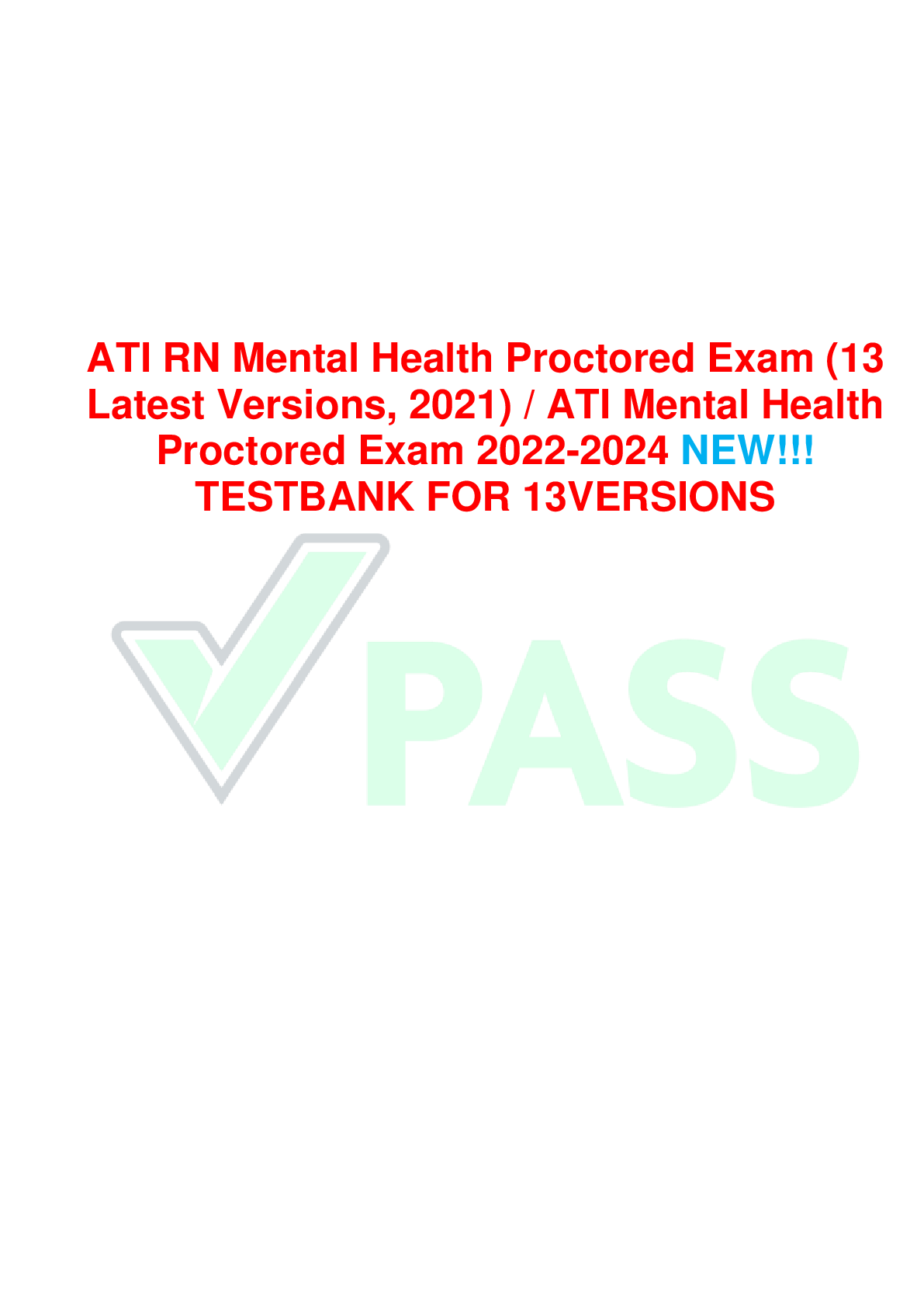
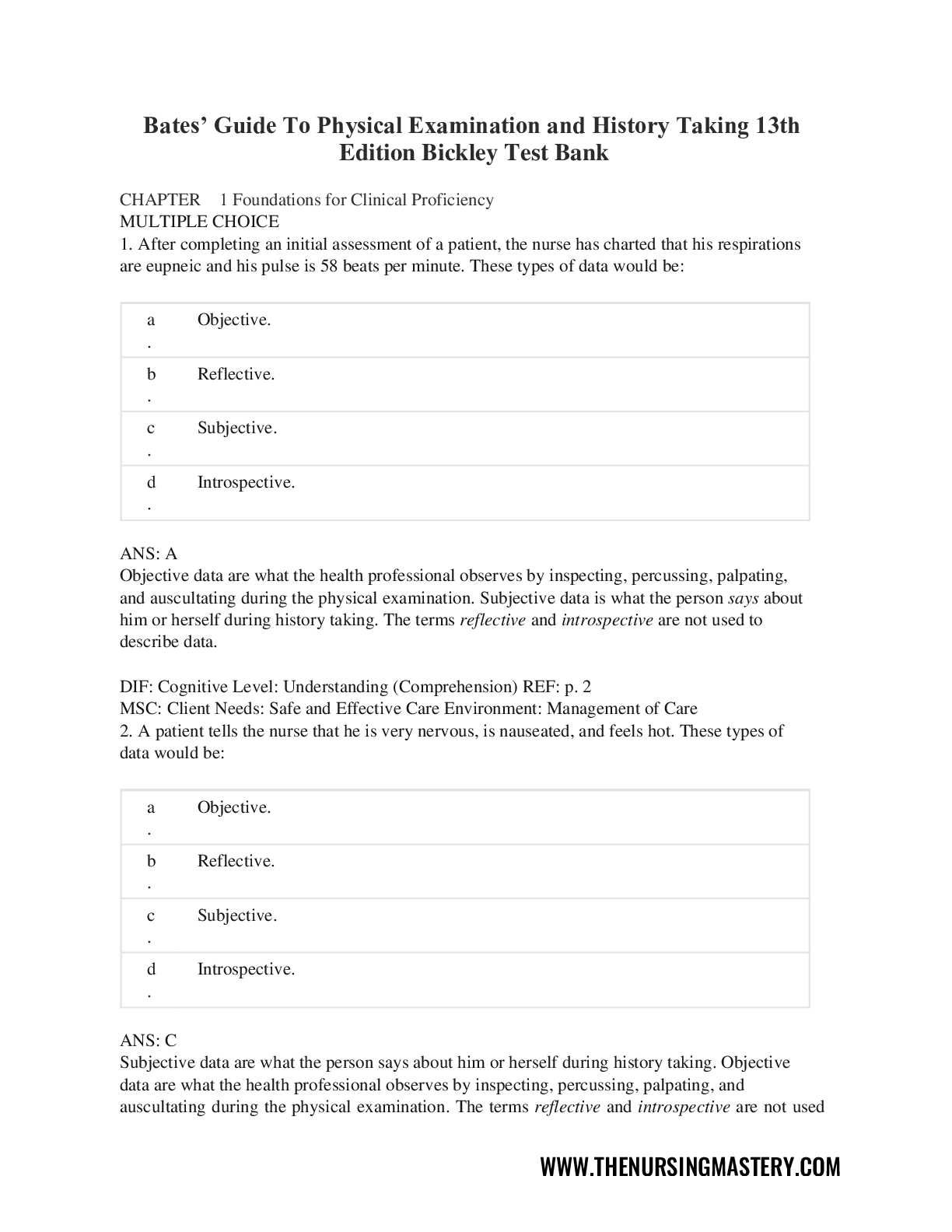
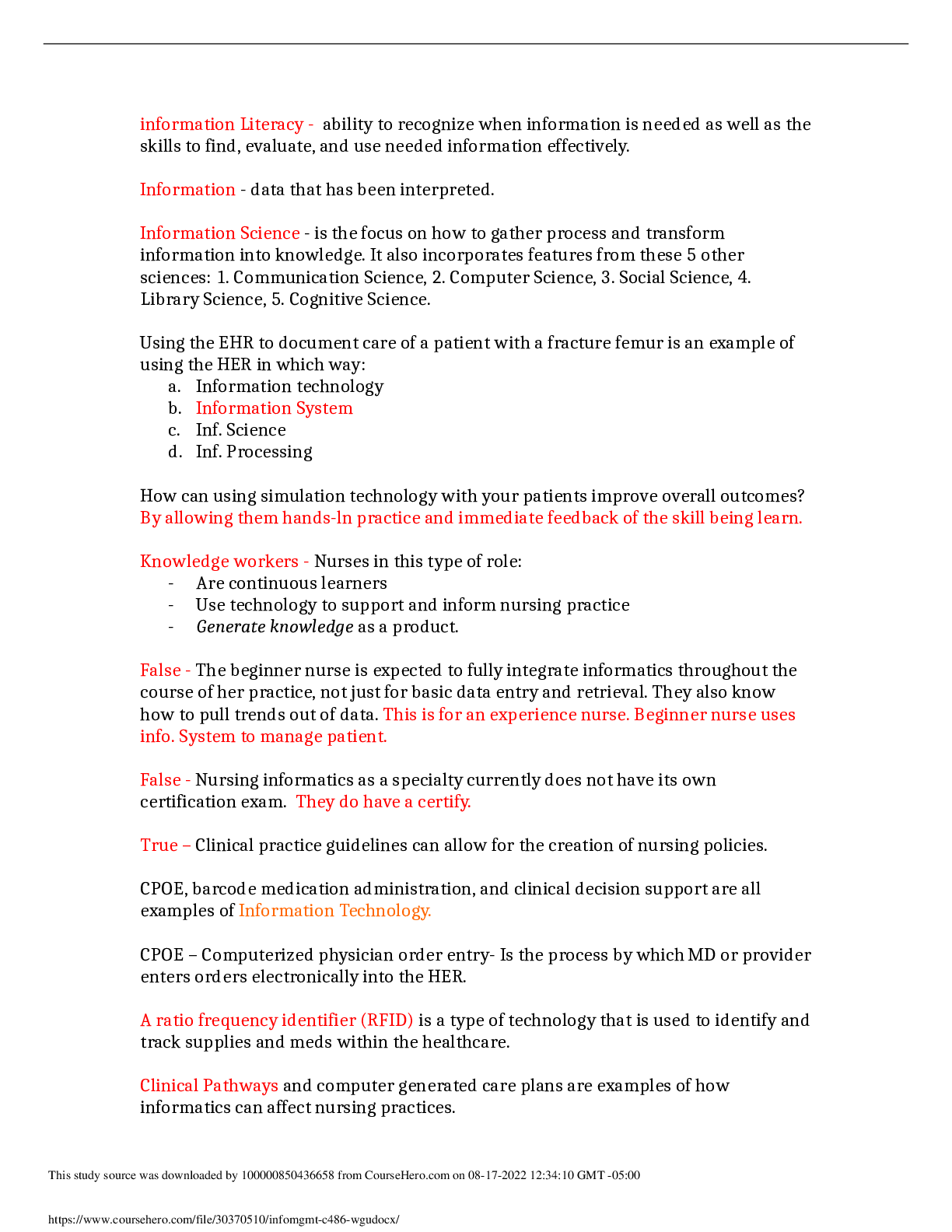
 (1).png)
